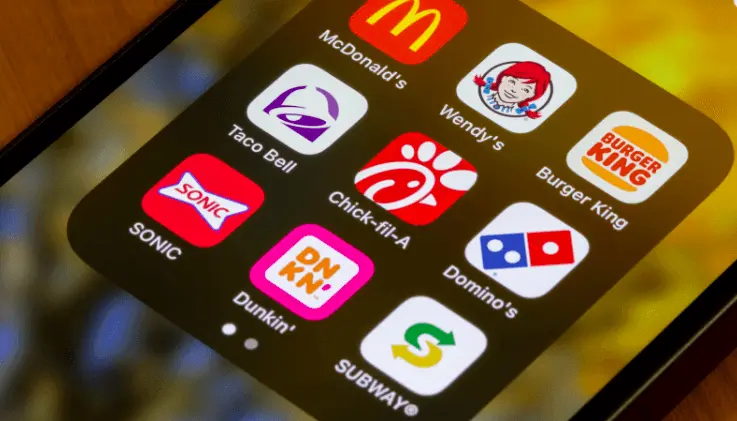The Quick Service Restaurant industry, also known as the fast-food industry, has become an integral part of modern society.
With its emphasis on efficiency, convenience, and affordability, the QSR industry caters to the fast-paced lifestyle of consumers seeking a quick and delicious meal on the go.
This article will delve into the critical aspects of the QSR industry, its challenges, and the innovations that drive its success.
Visit Jack In The Box restaurant and participate in the guest experience survey at the Jacklistens.com website.

The Pillars of Success
The QSR industry’s success can be attributed to several key factors:
Speed and Convenience
Quick service is at the heart of the industry. QSRs are designed to serve customers rapidly through drive-thru lanes, counter service, or online ordering for delivery and takeout.
This convenience appeals to busy individuals, commuters, and families alike.
Affordability
QSRs offer value for money, making it an affordable option for many consumers. The ability to purchase a satisfying meal at a reasonable price point has contributed significantly to the industry’s popularity.
Consistency And Standardization
Customers expect consistency in taste and service when they visit QSRs. Successful chains have implemented rigorous training programs and standardized processes to meet this demand and ensure uniformity across all outlets.
Global Reach
The QSR industry’s international expansion has brought its offerings to diverse markets worldwide. Iconic brands are recognized and loved across borders, embracing local tastes while maintaining their core identity.
Challenges Faced By The Industry
While the QSR industry thrives on its convenience and accessibility, it also encounters several challenges:
Health And Nutrition Concerns
Consumers are seeking healthier food options with increasing awareness of health and nutrition. QSRs have had to adapt by introducing healthier menu choices and providing clear nutritional information.
Competitive Landscape
The QSR market is highly competitive, with numerous players vying for consumers’ attention. Chains must continuously innovate to stay relevant and differentiate themselves from their rivals.
Sustainability And Ethical Practices
Consumers are becoming more environmentally conscious and are favoring brands that embrace sustainable practices. QSRs increasingly adopt eco-friendly packaging, responsibly sourced ingredients, and reduced carbon footprints.
Regulatory Compliance
The industry faces regulations concerning food safety, labor practices, and marketing to children. Ensuring compliance with these regulations while maintaining operational efficiency is a delicate balancing act for QSRs.
Innovations Driving The Industry
The QSR industry has embraced various innovative practices to address challenges and stay ahead in the competitive market:
Digital Transformation
QSRs are leveraging technology to enhance the customer experience. Mobile apps and self-ordering kiosks allow seamless ordering and payment, reducing wait times and streamlining operations.
Menu Diversification
Many QSRs are expanding their menus to offer healthier options, vegetarian and vegan choices, and seasonal items. Customization features allow customers to tailor their orders to individual preferences.
Data Analytics And Personalization
By utilizing data analytics, QSRs gain insights into customer behavior and preferences. This data-driven approach enables personalized promotions and improved menu offerings.
Contactless And Delivery Services
The pandemic accelerated the adoption of contactless services, including delivery and takeout. QSRs have expanded their delivery networks and partnered with third-party delivery platforms to meet customer demands.
The Quick Service Restaurant industry has come a long way from its humble beginnings. It has evolved into a dynamic landscape driven by innovation, convenience, and customer-centricity.
As consumer preferences evolve, QSRs must remain agile, adapting to trends and technological advancements while staying true to their core values of providing quick, delicious, and accessible food to people around the globe.
FAQs
Many QSRs adopt eco-friendly practices, like biodegradable packaging and sustainable sourcing, to reduce their environmental impact.
QSRs adapt by diversifying their menus to include healthier options, vegetarian choices, and customizable items, catering to evolving consumer tastes.
Dark Kitchens, also known as virtual or ghost kitchens, operate solely for delivery and takeout, without any dine-in facilities. In contrast, traditional QSRs offer both dine-in and takeout options and may have a physical presence in various locations.
- TellPopEyes: Popeyes Customer Satisfaction Survey
- MyWingstopsurvey.com: Wingstop Customer Experience Survey
- SonicDriveIn.Com/Feedback: Sonic Drive-In Customer Survey
- Revolutionizing the Fast-Food Landscape: The New Jack in the Box Prototype
- Fast-Food Options For Healthy Eaters
- Jack In The Box Employees: Perks & Benefits
- Snoop Dogg’s $14 Meal: About The Dish & Review
- About Jack In The Box American Fast-Food Restaurant Chain
- Jack In The Box App – Android & iOS
- Quick Service Restaurant Industry: A Dynamic Landscape Of Convenience & Innovation
- Jack In The Box Franchising FAQs
- Jack In The Box Restaurant Experience
- BBQ Dipping Sauce: What Is It? How To Make It?
- American Fast-Food Chain Restaurants
- Franchising With Jack In The Box